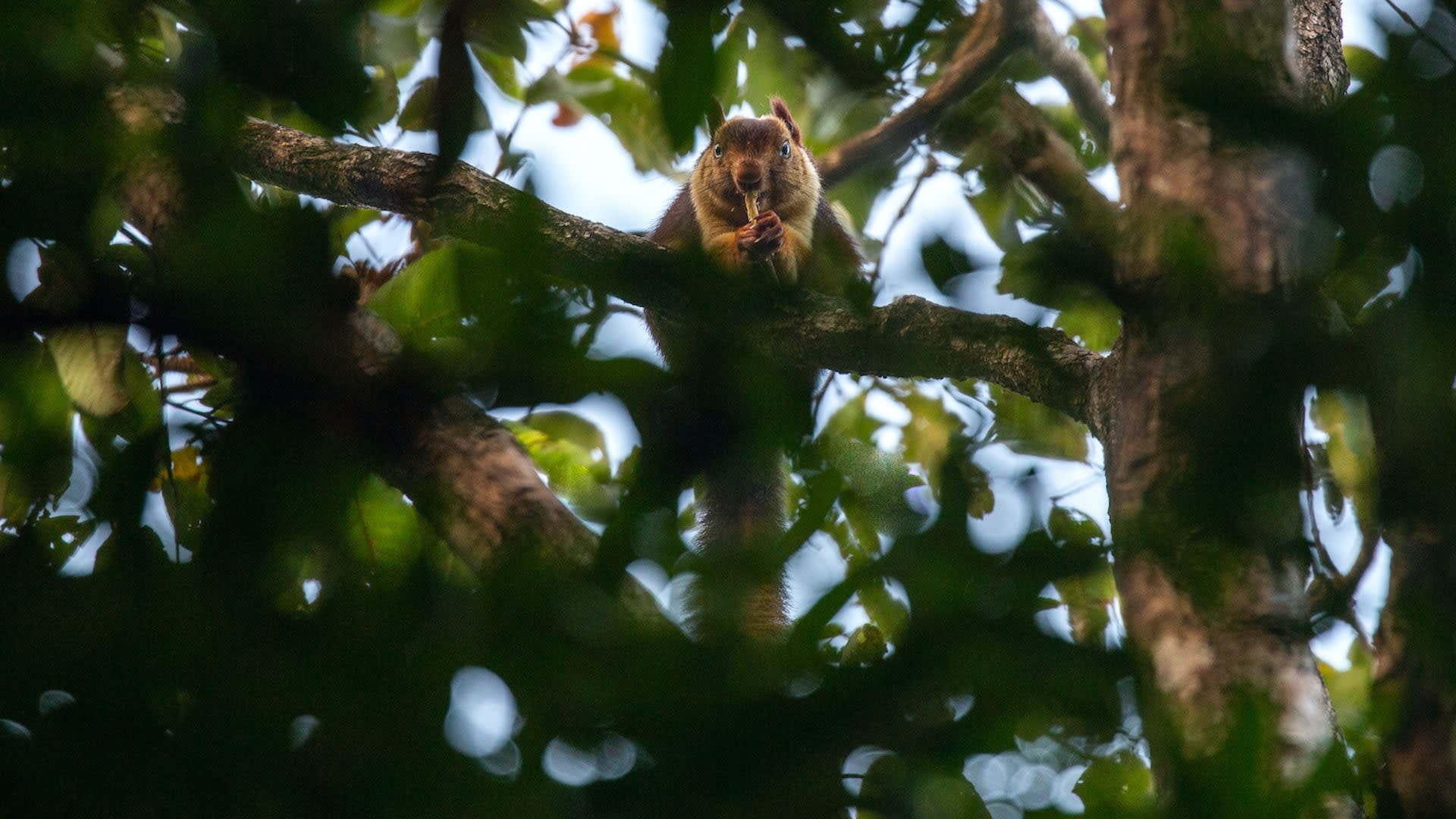 Listen to this article
•
15:34 min
Listen to this article
•
15:34 min
Squirrels have been around on Earth for around 30-40 million years, and around 200 species have been identified worldwide. Endearingly inquisitive and remarkably agile, they come in various forms. Tree squirrels, ground squirrels, chipmunks, marmots, flying squirrels, prairie dogs — all of them present in the wild on every continent except Antarctica and Australia.
Squirrels are currently classified into five subfamiles: Ratufinae, Sciurillinae, Sciurinae, Xerinae, and Callosciurinae. The forests of south and southeast Asia host four cat-sized tree squirrels belonging to the genus Ratufa — the black giant squirrel (Ratufa bicolour), the Indian giant squirrel (Ratufa indica), the grizzled giant squirrel (Ratufa macroura) and the pale giant squirrel (Ratufa affinis). The first three are found in India.
Giant squirrels are among the largest squirrels in the world. These arboreal creatures prefer habitats with contiguous forest patches, tall trees, and canopy connectivity, which protect them from predators and provide an ample supply of food. In fact, they rarely descend from the forest canopy. Despite their high perch they serve as prey for raptors and sometimes even large carnivores such as leopards and clouded leopards and primates such as lion-tailed macaques.
Giant squirrels weigh between 1.5 and 3 kilos, and have tails that are as long as their bodies, measuring 25-46 cm. Just like other members of the order Rodentia, they are endowed with two front teeth that continue to grow throughout their lives. They primarily feed on fruits, flowers, seeds, leaves, bark, and occasionally insects and bird eggs too.
Scientists don’t know why these mostly solitary giant squirrels evolved to be larger than their squirrel cousins. Biologist Nandini Rajamani suggests their larger size might enable them to access different kinds of food from different storeys of the forest.
Destruction and fragmentation of their forest habitats, along with hunting, are major threats to the survival of giant squirrels.
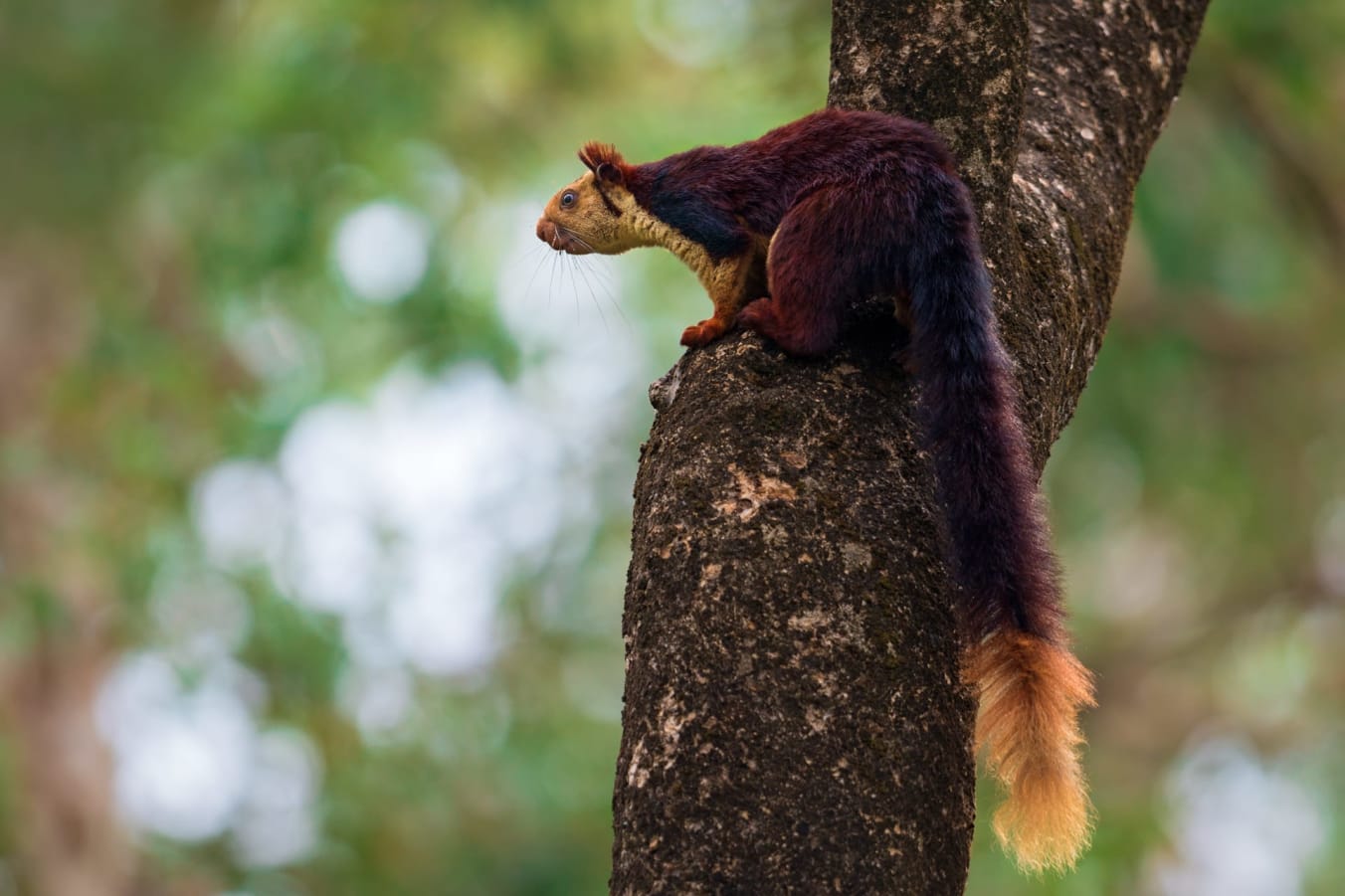
Burgundy, maroon, black, cream – the fur of the Indian giant squirrel varies according to where it occurs, and from one individual to another in the same location. “We visited a couple of sites and looked at many Indian giant squirrels in those sites. We found high variability in their coat colouration within these sites,” says Rajamani. Her Sciurid Lab project uses published images from across the animal’s range to describe the colour variations and morphs of these giant squirrels. “Indian giant squirrels that you see as you go further south in India tend to be darker, with a lot of black fur on their backs. You don’t see such dark individuals as much in northern Maharashtra. Even within a site, like the Anaimalais, fur colour can vary from one individual to another,” she adds. Photo: Soumabrata Moulick
Cover photo: Saurabh Sawant
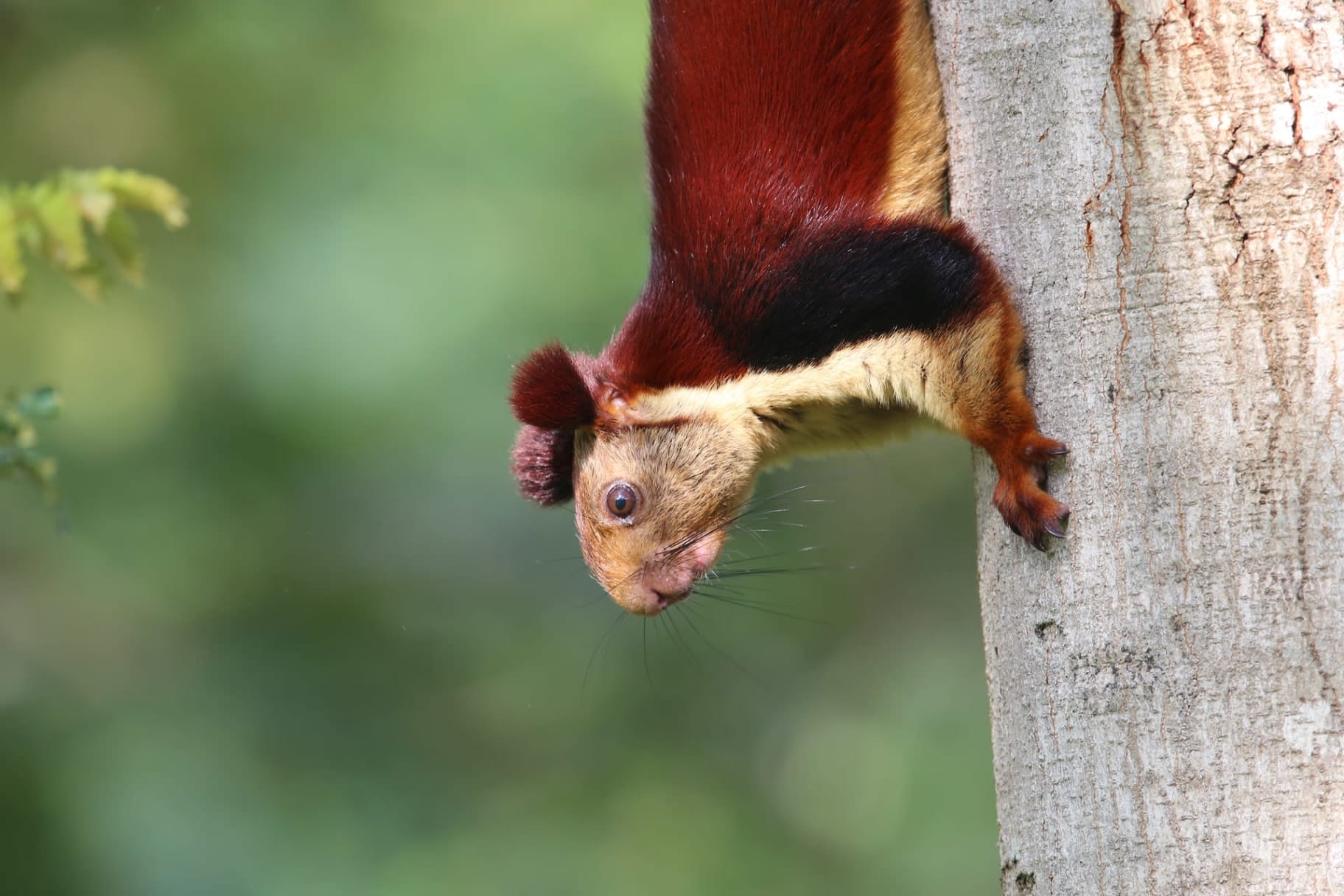
The Indian giant squirrel makes a series of high-pitched and staccato chirrups, which carry over long distances in the forest. Rajamani, whose lab is studying their acoustics, likens them to the sound of toy machine guns. “It sounds extra loud, given the size of the animal. There is no other sound in the forest quite like it,” she says. “We have recorded around six to seven different types of calls made by Indian giant squirrels,” she adds. Photo: Surya Ramachandran
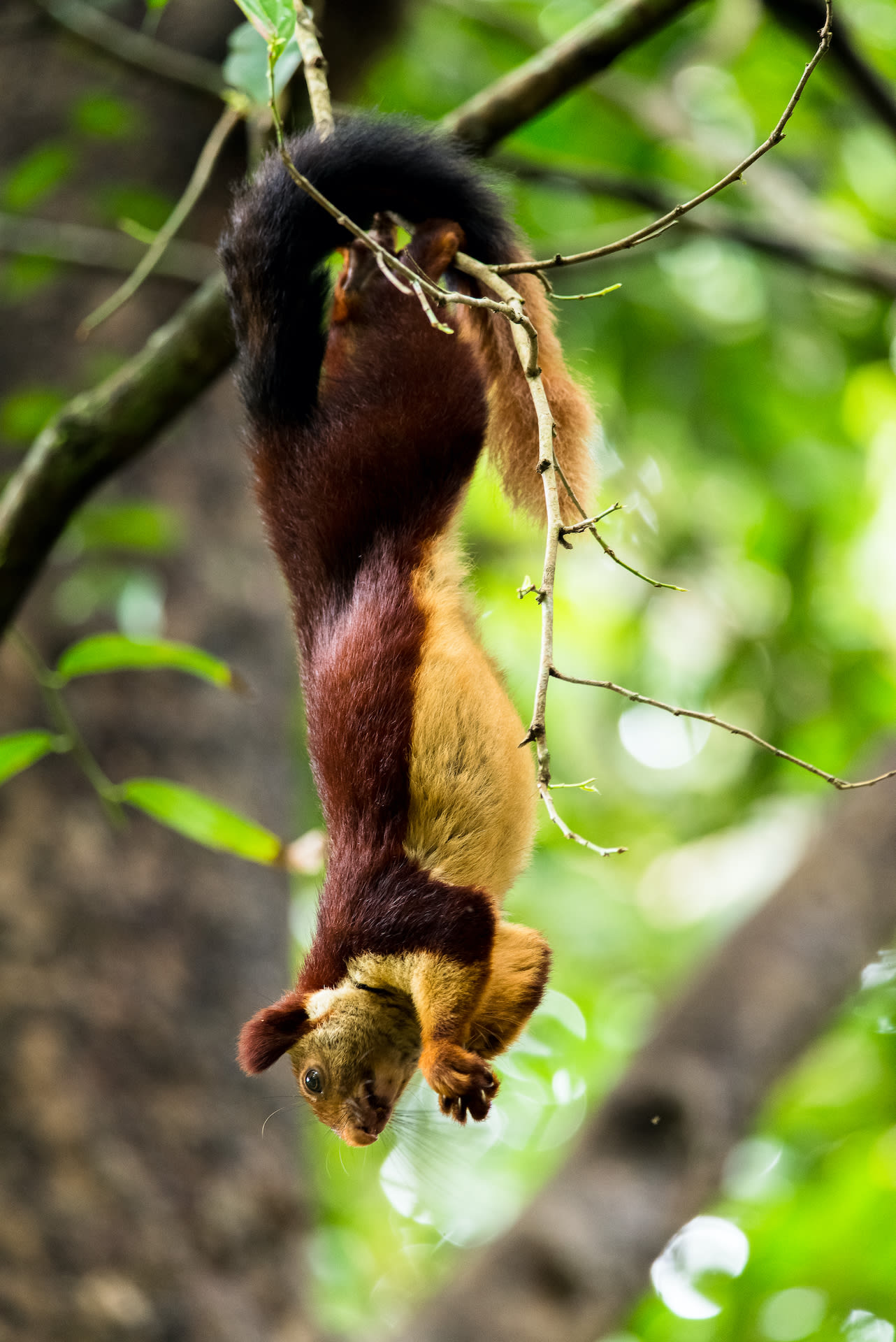
An acrobatic climber, the Indian giant squirrel will often hang by its hindlegs and use its tail for balance while feeding. Though these squirrels are naturally shy and wary, they can become habituated to humans and take food offered by them. “Indian giant squirrels can be seen taking food from the hands of pilgrims trekking up the forest trail to the Tirumala temple in Andhra Pradesh. This has also been reported from other locations,” says Rajamani. Photo: Manojiritty, CC BY-SA 4.0
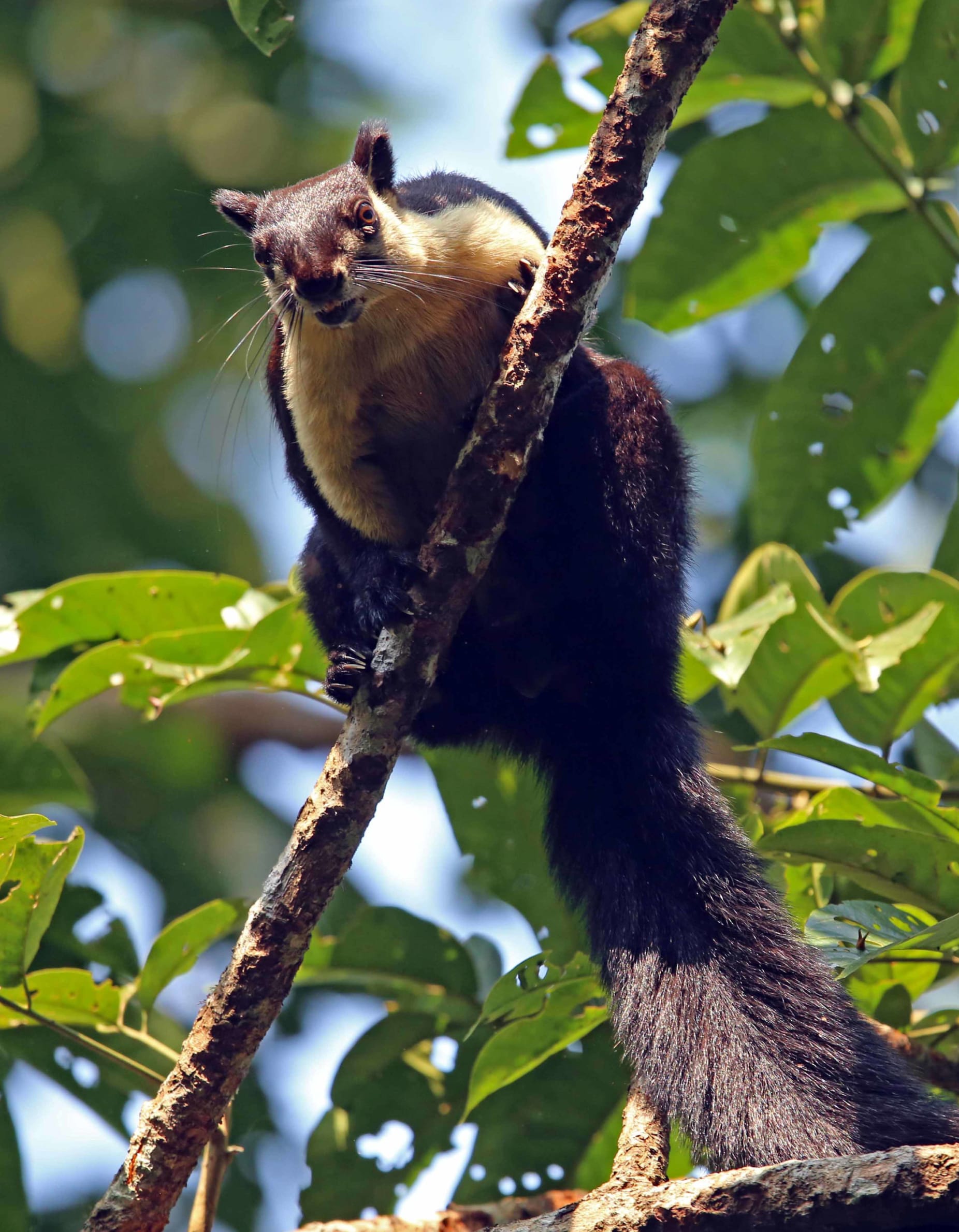
Photo: Surya Ramachandran
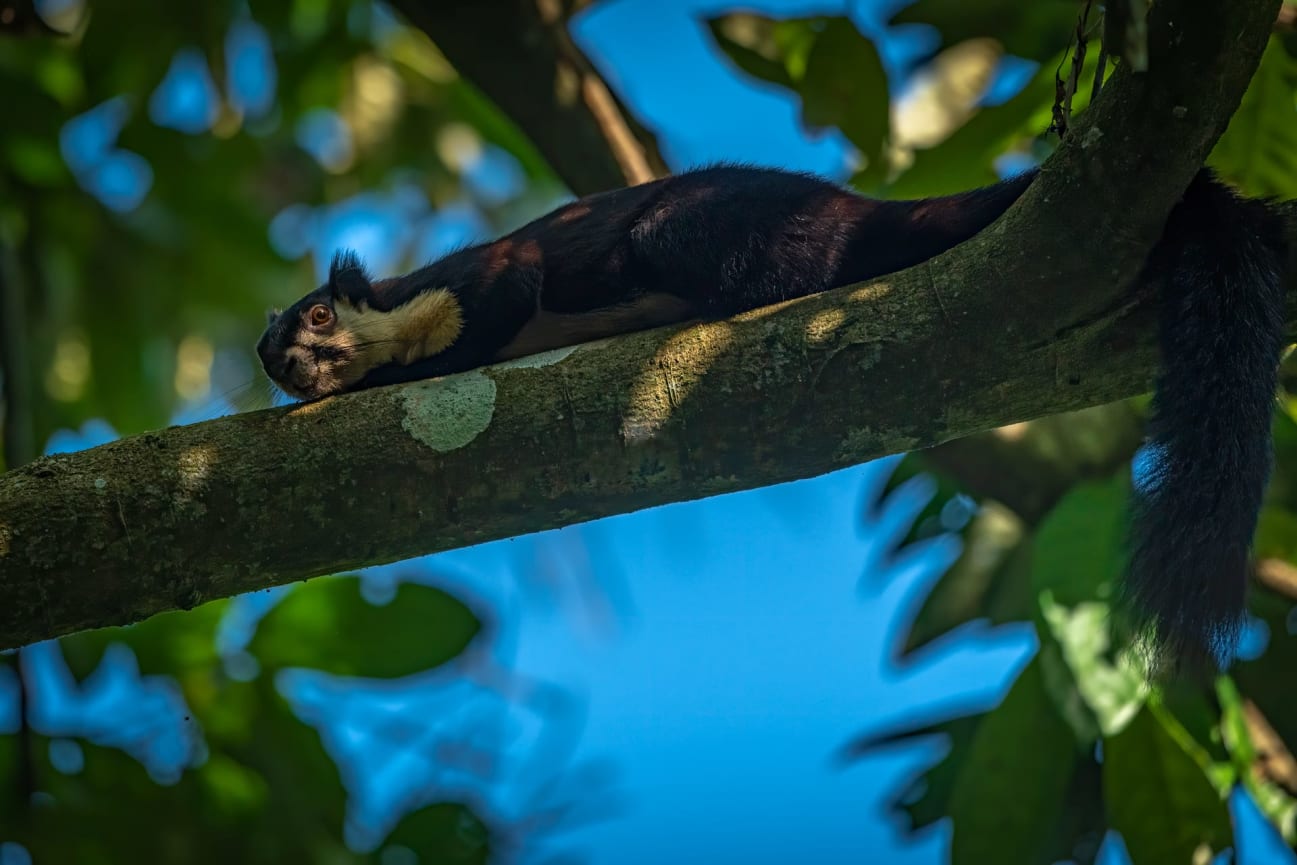
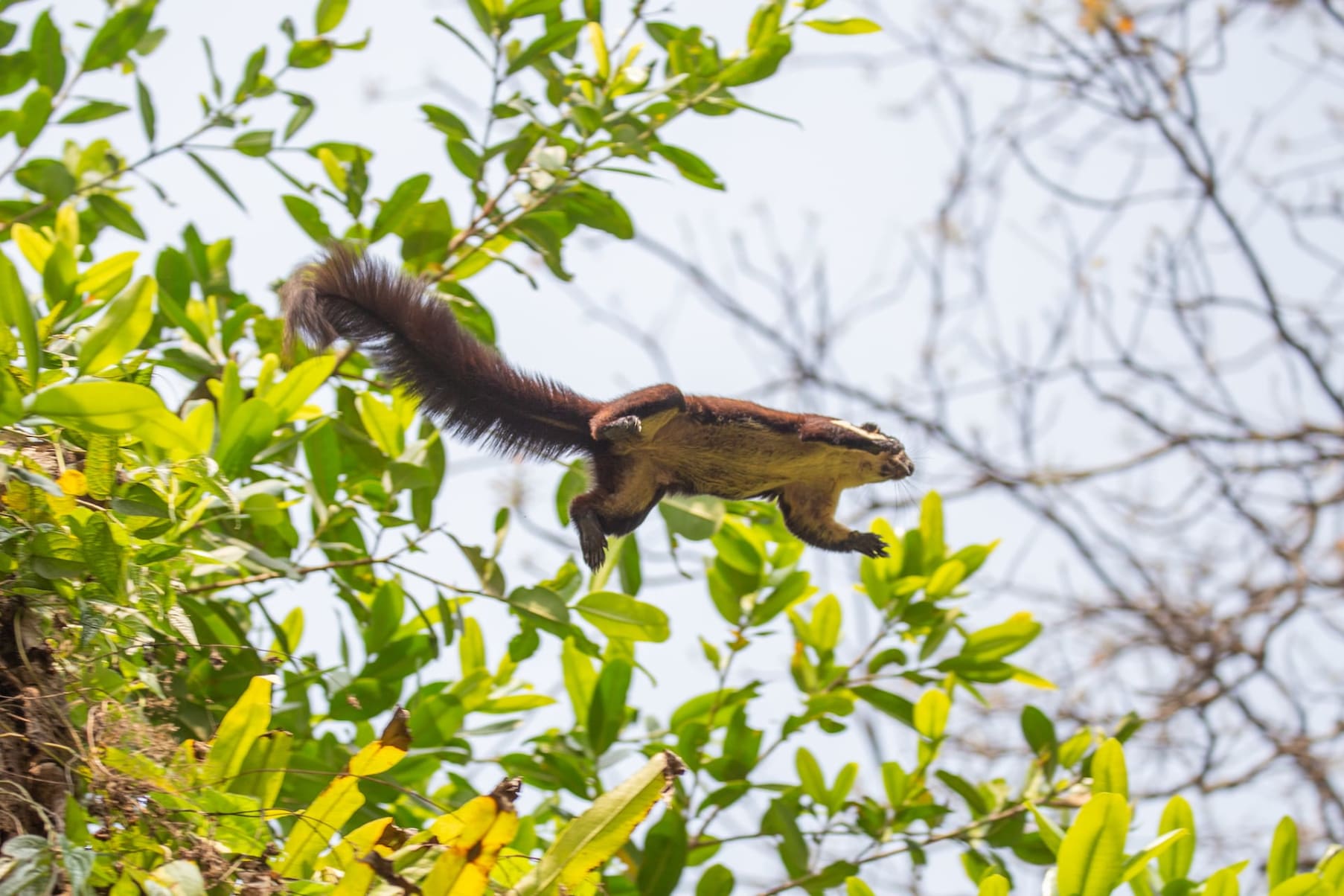
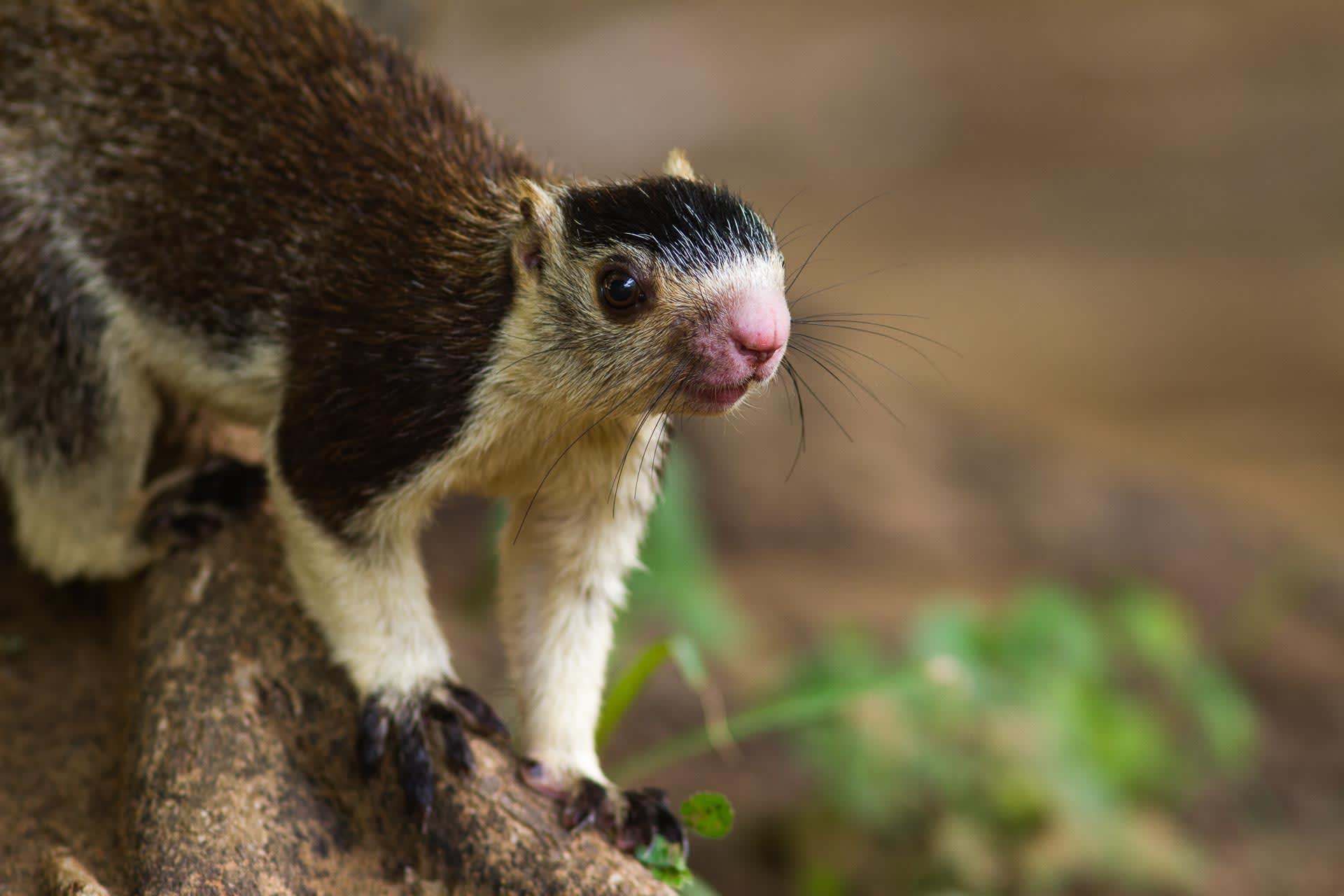
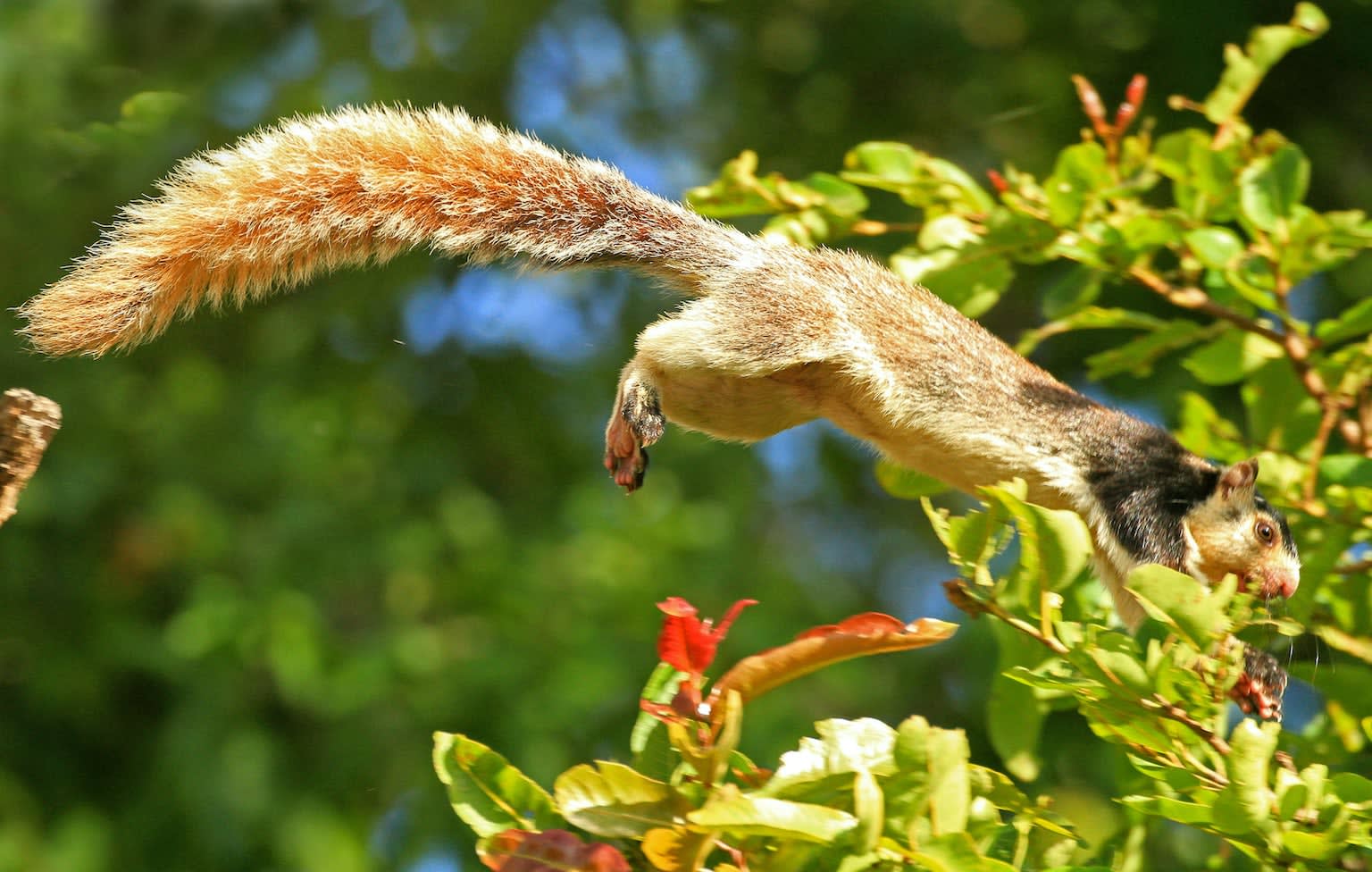
One of the greatest challenges facing the survival of giant squirrels is the degradation and destruction of their forest habitats. “Squirrels do come down to the ground, especially if there is no canopy cover, and incidences of them becoming roadkill are not uncommon,” says Rajamani. Mitigation measures such as building canopy bridges (right, in the Anaimalai Hills) not only prevent giant squirrels , but also other arboreal mammals from meeting a ghastly end under the wheels of a vehicle (left). Photos: PJeganathan, CC BY-SA 4.0 (left), Ganesh Raghunathan (right)



